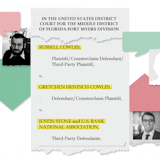Instead of being inundated with news about coronavirus this spring, Minnesota's more than 1 million anglers were supposed to hear and read messages about switching from lead fishing tackle to nontoxic alternatives made of tin, steel and tungsten, among other materials.
Such was the plan of the Minnesota Pollution Control Agency (MPCA) and the Department of Natural Resources (DNR) after receiving a million-dollar payout from the 2010 Deepwater Horizon Gulf of Mexico oil spill.
Minnesota had been awarded $1.2 million as part of a multibillion-dollar legal settlement with British Petroleum (BP) and had intended this spring to use the money to begin a three-year educational campaign to persuade Minnesota anglers to "get the lead out'' of their tackle boxes.
The money was allotted to Minnesota after a convincing argument was made by DNR nongame-wildlife program supervisor Carrol Henderson, among others, that loons that nest and spend their summers in Minnesota but winter in the Gulf of Mexico were harmed by the oil spill, and that as a result the state should be compensated.
Henderson has since retired.
The MPCA had intended to hire two people to run the get-the-lead-out program and launch an information campaign this spring. But state agencies froze hiring because of the pandemic. Now, on the cusp of the May 9 fishing opener, the anti-lead campaign remains on the shelf, more an idea than a reality.
"The money is approved and awarded to the state,'' Henderson said. "But it's just sitting there. We won't lose it. In fact, if the state can demonstrate it used the money effectively in the first three-year fishing-tackle campaign, there's a chance more money could be allotted to us for another three years. But for now, the campaign is likely delayed at least until fall and perhaps until next spring.''
Small lead sinkers — those weighing an ounce or less — and small lead jigs, such as those used for panfish, are particularly troublesome for loons and swans.



